Chasing the Northern Lights
Text and photos: Rayann Elzein
I am going on my eight consecutive winter chasing the elusive Aurora Borealis, or Northern Lights, all around Inari, in the very north of Finnish Lapland. Sure, I have also seen the Aurora in Norway and even Greenland, but every single winter I am drawn back to Inari for photography and to help people enjoy this magnificent show of nature. I am often asked “why do you always go back to Inari?” or “why don’t you try somewhere else?”. I always wanted to experience the northern lights, but at first the only thing I knew was that I had to go somewhere north. But where north? So after a long process and weeks of research I set my mind on Inari.
Inari is right under the Aurora oval
The Aurora Borealis appears under a huge doughnut shaped ring that is centred on earth’s magnetic north pole. Without getting too much into the science, this means that if you travel to a location right under the “doughnut”, or Aurora oval, you maximise your chances to see the northern lights, even when the activity is very low.
Inari is located at 68°50’N – 265 km (165 mi) north of the Arctic Circle. This positions Inari right under the ring, almost guaranteeing to see some northern lights on a clear night. This probability based on scientific facts is the most important criteria in my decision to visit Inari and return there so often.
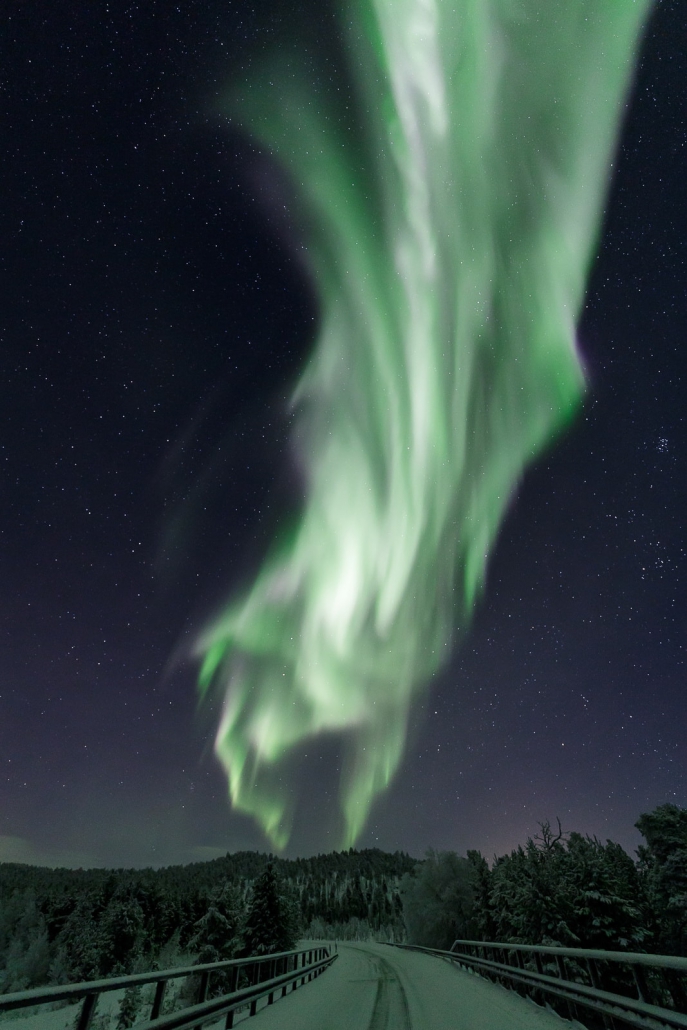
An excellent road network
When you want to see the northern lights, you go “Aurora chasing” with a guide or your own car. In reality, it would be more accurate to say that you are chasing the good weather as you cannot see the Aurora if you are under clouds. Although I am no meteorologist, my personal opinion is that there are often clear nights around Inari. However, if this does not happen during your stay, don’t worry: there are several roads radiating from Inari to all directions. You might even end up on the shore of a fjord in Norway! This makes it very easy to chase the good weather.
Some words of caution: when you are driving yourself, be careful in difficult weather. You also have to be careful of reindeer and elk that are frequently standing or sleeping right in the middle of the road. If you don’t have experience with winter driving, or just want to relax and not worry about anything, then hiring one of the several professional guides is a safer idea.
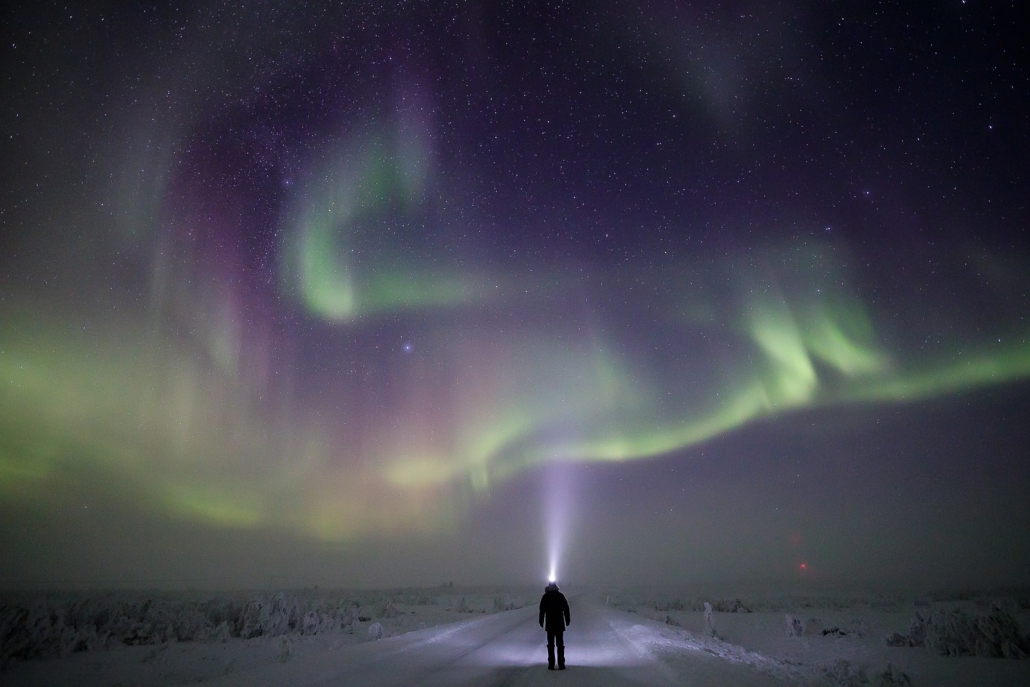
Much more than just Aurora
There are many places in the world that are located under the Aurora ring but only few of them are inhabited and accessible. Despite being located so far north of the Arctic Circle, Inari-Saariselkä offers a full range of state-of-the-art tourism facilities: comfortable hotels, excellent restaurants, safari companies with a broad range of services. The entire area is also culturally rich, as the home of the Sami people. You can learn a lot about this at the Siida museum. And for a total immersion, an excursion with a reindeer herder will teach you more than any museum (you can even pet the reindeer!)
How to photograph the Aurora
With these few recommendations and just a bit of practice, it is actually quite easy to take some good Aurora photos. A camera with manual mode and a tripod are all that you need. The basic settings that you can use are the following:
- Sensitivity: +/- 1600 iso
- Aperture: the largest possible aperture (the smallest number on your lens, i.e. f/2.8-3.5-4)
- Shutter speed: this one depends on the brightness of the Aurora. Start at 10 seconds and move up or down depending on what you see on your camera screen.
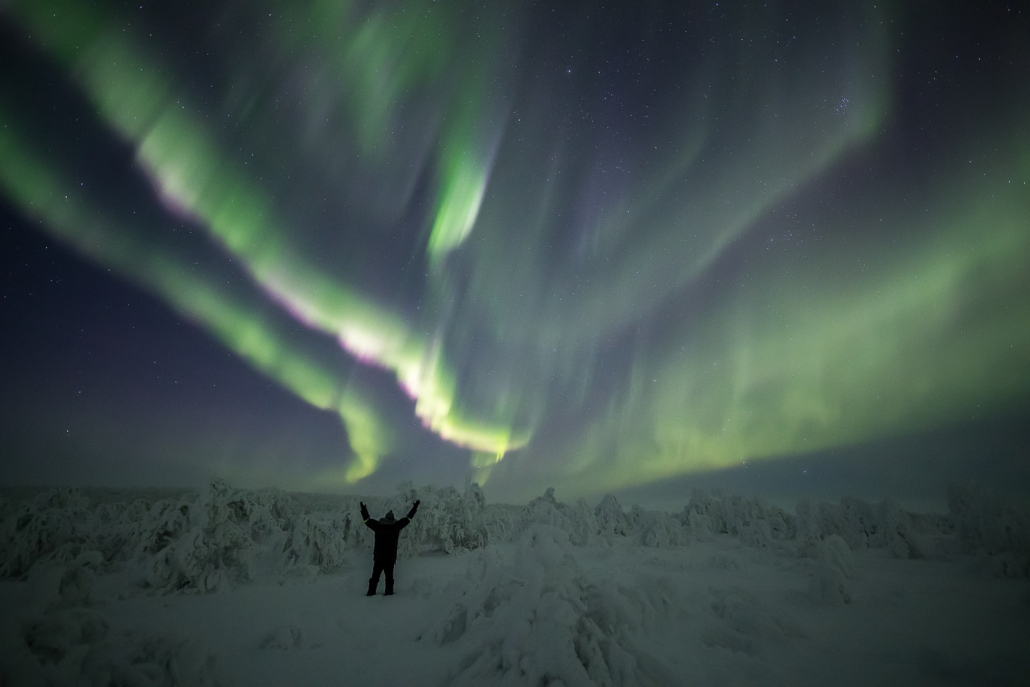
Focussing is the hardest thing to do at night. If you don’t manage to focus on stars, ask someone to stand about 30 meters from you with a flash light, and use auto focus on this light. Then switch to manual focus (MF) and don’t touch this setting anymore.
Tip: practice with your cameras before going out for Aurora, so that you know where all the settings are.
Aurora chasing
A frequent question is how often it is possible to see the Aurora. On a clear night, it is almost always possible to catch at least a glimpse of the northern lights. It might not always be some intense colourful outbursts, but if you are lucky you will see some light dancing in the sky. That’s why I always go out at night if there’s even the slightest chance to find clear sky.
My Aurora chasing usually begins in the early afternoon, when I browse through several weather forecast websites, and exchange text messages with other Aurora chasers all around the region. With this information I make an action plan and will usually start driving around 7 PM. I have often witnessed Aurora in the very early evening, so I like to be in position as soon as it’s dark! During the polar night, this can even be much earlier, like 3 PM or 4 PM.
Once in position, the waiting game begins (unless the Aurora appeared unexpectedly much earlier while still on my way!). Clouds might disturb the view to the stars, so I check the weather forecast once more, and call my friends again to have the latest update of their location. If needed, I will drive again.
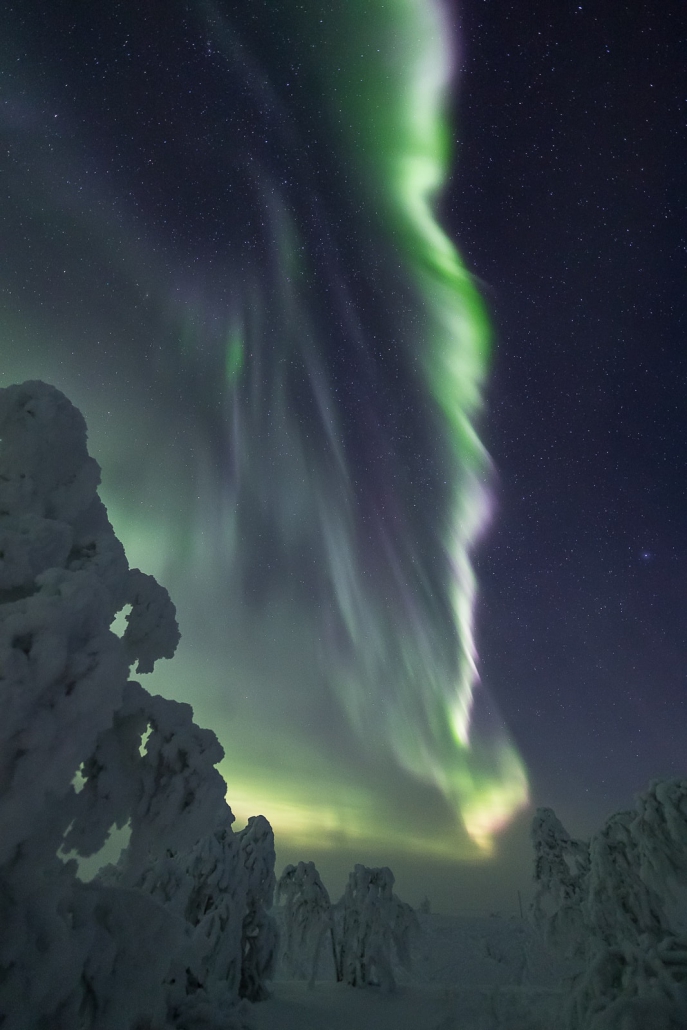
The Aurora starts dancing in the sky. I am in my element now. I know how it moves, I anticipate its movements, I can be ready to take the best possible pictures. Sometimes it surprises me, actually quite often, and this is why I never get bored. I always return, and participate in the dance. You might even hear me scream “wow” or something in French. I take photos of my happy guests under the Aurora. I can never decide when to start driving back, because I know that another outburst can always happen. But I know that the Aurora will be there again tomorrow, and we finally drive back to the hotel, with beautiful images in our memory cards, and amazing memories in our minds.

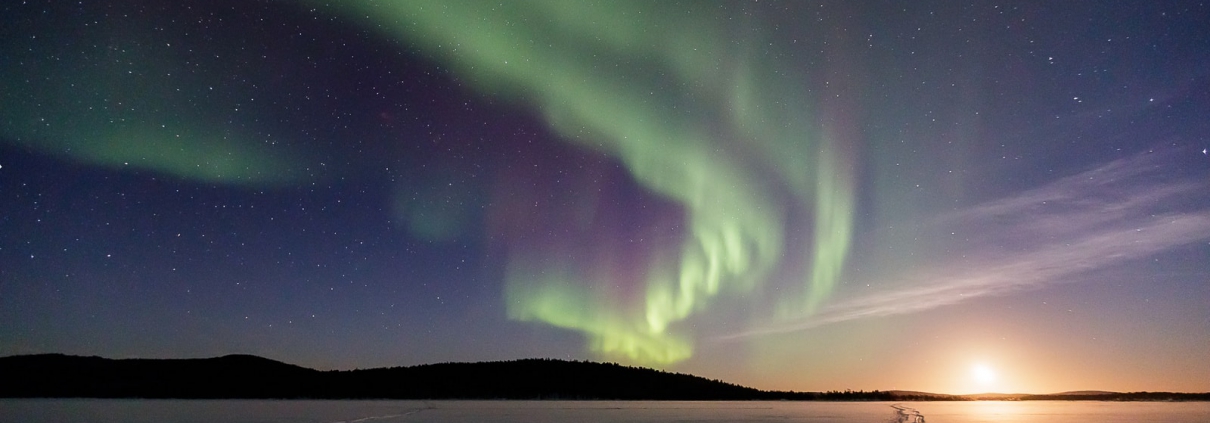



Leave a Reply
Want to join the discussion?Feel free to contribute!